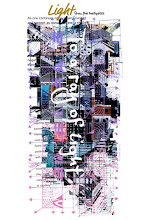Looking at the symbols, their ages, and places that we have seen so far, it becomes clear that religion and religion have one source, and that they have developed in various places. The fact that almost every nation, including Africa, Asia, the Americas, and Australia, has similar creation myths suggests that they already had the same basic myths when they arrived at the land. Even if it spreads later, it is unlikely that it will be adopted in the same way around the world. However, the myths and symbols that were created later sometimes spread partially.
From this perspective, there are two paths for religious development . At the time of departure from Africa, some common symbols were completed, along with the flow from Iran to Australia around 50,000 BC and the flow to Europe, East Asia, and the Americas after 40,000 BC .
When the common symbols are classified by this, the common symbol A group is completed at the time of Africa and spreads all over the world as follows. And as the years go by, new symbols and myths are born in various places, and they mix and develop.
Around 70,000 BC, at the time of departure from Africa
○ Common symbol A group
・Two snakes, rainbow serpents ( Benin, etc. )
・ Creation myth of the universe ( Maasai, etc. )
・ Space eggs ( Dogon, etc. )
・ Flood myth ( Mbuti, etc. )
・ Story of creating humans from clay ( Mbuti tribe, etc. )
・Creation myth of heaven and earth ( Abariya people of Kenya, etc. )
Adam and Eve ( Ashanti in West Africa )
・ Sumo and wrestling ( Duala sumo in Cameroon )
・ Dolmen (Algeria)
・ Animism that souls and gods dwell in everything
・ Tree faith
Aboriginal Australia , around 50,000 BC
○ Common symbol A group
Toward Japan around 40,000 BC
・ Creation myth of the universe
· Animism
・ Tree faith
・ Goddess statue
From around 20,000 BC to Europe ,East Asia and the Americas
-Various symbols (in European cave paintings around 20,000 BC , swirls, zigzags, serpentine lines, crescent-shaped semicircles, ladders, palms )
・ Creation myth of the universe
・ Animism
・ Tree worship
・ Goddess statue
・ Sumo and wrestling
Around 10,000 BC , Gobeklitepe , various symbols of Turkey (
two snakes, golden ratio swirl, T-shaped, H-shaped, handbag, eagle, scorpion, wild boar, lizard, etc.)
From around 5000 BC to Egypt, Europe, East Asia and the Americas
○ In addition to the common symbol A group
・ Various symbols ( golden ratio vortex pattern, T-shaped, H-shaped, handbag, wild boar, dragon, tiger, winged sun, etc.)
・ Architecture using the golden ratio
・ Stone masonry with cuts
・ Pyramid
・ Story of a god being put into something during the baby's era and washed away in the river
・ Lion statue
・ Story of the moon and a rabbit
It can be said that there were already spiritually superior people at that time, such as the existence of space creation myths and animism at the time of departure from Africa around 70,000 BC . Shamans and other prayers and shrine maidens (Miko) would have played a As we have seen, the conclusion is that all religions, beliefs, and shamanism have the same origin and have spread from Africa. It was mixed in various places and developed into a unique name and story. And the gods of all religions mean "consciousness" which is Emptiness, which is also human consciousness.





0 コメント